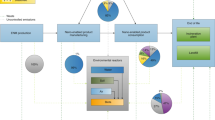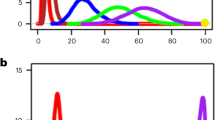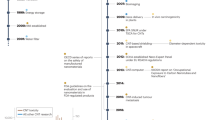Abstract
It has been some 15 years since the topics of sustainability and nanotechnologies first appeared together in the scientific literature and became a focus of organizations' research and policy developments. On the one hand, this focus is directed towards approaches and tools for risk assessment and management and on the other hand towards life-cycle thinking and assessment. Comparable to their application for regular chemicals, each tool is seen to serve separate objectives as it relates to evaluating nanotechnologies' safety or resource efficiency, respectively. While nanomaterials may provide resource efficient production and consumption, this must balance any potential hazards they pose across their life-cycles. This Perspective advocates for integrating these two tools at the methodological level for achieving this objective, and it explains what advantages and challenges this offers decision-makers while highlighting what research is needed to further enhance integration.
This is a preview of subscription content, access via your institution
Access options
Access Nature and 54 other Nature Portfolio journals
Get Nature+, our best-value online-access subscription
$29.99 / 30 days
cancel any time
Subscribe to this journal
Receive 12 print issues and online access
$259.00 per year
only $21.58 per issue
Buy this article
- Purchase on Springer Link
- Instant access to full article PDF
Prices may be subject to local taxes which are calculated during checkout



Similar content being viewed by others
References
Savolainen, K. et al. Nanosafety in Europe 2015–2025: Towards Safe and Sustainable Nanomaterials and Nanotechnology Innovations (Finnish Institute of Occupational Health, 2013).
Busnaina, A. A., Mead, J., Isaacs, J. & Somu, S. Nanomanufacturing and sustainability: opportunities and challenges. J. Nanoparticle Res. 15, 1–6 (2013).
Greßler, S ; Nentwich, M. Nano and the environment. Part I: potential environmental benefits and sustainability effects. Nano Trust Dossiers 26, 1–4 (2012).
Hellweg, S. & Mila i Canals, L. Emerging approaches, challenges and opportunities in life cycle assessment. Science 344, 1109–1113 (2014).
Steinfeldt, M. & Petschow, U. Nanotechnologies, Hazards and Resource Efficiency (Springer, 2007).
Stone, V. et al. Engineered Nanoparticles: Review of Health and Environmental Safety (2009).
Aschberger, K. et al. Review of carbon nanotubes toxicity and exposure—appraisal of human health risk assessment based on open literature. Crit. Rev. Toxicol. 40, 759–790 (2010).
Johnston, H. J. et al. A review of the in vivo and in vitro toxicity of silver and gold particulates: Particle attributes and biological mechanisms responsible for the observed toxicity. Crit. Rev. Toxicol. 40, 328–346 (2010).
Current Intelligence Bulletin 63: Occupational Exposure to Titanium Dioxide (National Institute for Occupational Safety and Health, 2011).
Hristozov, D. & Ertel, J. Nanotechnology and sustainability: benefits and risks of nanotechnology for environmental sustainability. Forum Forsch 22, 161–168 (2009).
Gavankar, S., Suh, S. & Keller, A. F. Life cycle assessment at nanoscale: review and recommendations. Int. J. Life Cycle Assess. 17, 295–303 (2012).
Hischier, R. & Walser, T. Life cycle assessment of engineered nanomaterials: state of the art and strategies to overcome existing gaps. Sci. Total Environ. 425, 271–282 (2012).
Grieger, K. D. et al. Analysis of current research addressing complementary use of life-cycle assessment and risk assessment for engineered nanomaterials: have lessons been learned from previous experience with chemicals? J. Nanoparticle Res. 14, 1–23 (2012).
Linkov, I. & Seager, T. P. Coupling multi-criteria decision analysis, life-cycle assessment, and risk assessment for emerging threats. Environ. Sci. Technol. 45, 5068–74 (2011).
Breedveld, L. Combining LCA and RA for the integrated risk management of emerging technologies. J. Risk Res. 16, 459–468 (2013).
Meyer, D. E. & Upadhyayula, V. K. K. The use of life cycle tools to support decision making for sustainable nanotechnologies. Clean Technol. Environ. Policy 16, 757–772 (2014).
Beaudrie, C. E. H., Kandlikar, M. & Satterfield, T. From cradle-to-grave at the nanoscale: gaps in U. S. regulatory oversight along the nanomaterial life cycle. Environ. Sci. Technol. 47, 5524–5534 (2013).
Harder, R., Holmquist, H., Molander, S., Svanström, M. & Peters, G. M. Review of environmental assessment case studies blending elements of risk assessment and life cycle assessment. Environ. Sci. Technol. 49, 13083–13093 (2015).
Potting, Jose ; Hauschild, M. Spatial differentiation in life cycle impact assessment: a decade of method development to increase the environmental realism of LCIA. Int. J. Life Cycle Assess. 11, 11–13 (2006).
Rosenbaum, R. K. et al. USEtox—the UNEP-SETAC toxicity model: recommended characterisation factors for human toxicity and freshwater ecotoxicity in life cycle impact assessment. Int. J. Life Cycle Assess. 13, 532–546 (2008).
Pini, M., Salieri, B., Ferrari, A. M., Nowack, B. & Hischier, R. Human health characterization factors of nano-TiO2 for indoor and outdoor environments. Int. J. Life Cycle Assess. 21, 1452–1462 (2016).
Salieri, B., Righi, S., Pasteris, A. & Olsen, S. I. Freshwater ecotoxicity characterisation factor for metal oxide nanoparticles: a case study on titanium dioxide nanoparticle. Sci. Total Environ. 505, 494–502 (2015).
Eckelman, M. J., Mauter, M. S., Isaacs, J. A. & Elimelech, M. New perspectives on nanomaterial aquatic ecotoxicity: production impacts exceed direct exposure impacts for carbon nanotoubes. Environ. Sci. Technol. 46, 2902–2910 (2012).
Miseljic, M. & Olsen, S. I. Life-cycle assessment of engineered nanomaterials: a literature review of assessment status. J. Nanoparticle Res. 16, 1–33 (2014).
Darlington, T. K., Neigh, A. M., Spencer, M. T., Nguyen, O. T. & Oldenburg, S. J. Nanoparticle characteristics affecting environmental fate and transport through soil. Environ. Toxicol. Chem. 28, 1191–1199 (2009).
Lin, D., Tian, X., Wu, F. & Xing, B. Fate and transport of engineered nanomaterials in the environment. J. Environ. Qual. 39, 1896–1908 (2010).
Meesters, J. A. J., Koelmans, A. A., Quik, J. T. K., Hendriks, A. J. & van de Meent, D. Multimedia modeling of engineered nanoparticles with SimpleBox4nano: model definition and evaluation. Environ. Sci. Technol. 48, 5726–5736 (2014).
Klaine, S. J. et al. Nanomaterials in the environment: behavior, fate, bioavailability, and effects. Environ. Toxicol. Chem. 27, 1825–1851 (2008).
Walser, T. et al. Life-cycle assessment framework for indoor emissions of synthetic nanoparticles. J. Nanoparticle Res. 17, 1–18 (2015).
Li, D. et al. In vivo biodistribution and physiologically based pharmacokinetic modeling of inhaled fresh and aged cerium oxide nanoparticles in rats. Part. Fibre Toxicol. 13, 45 (2015).
Sonnemann, G. & Schuhmacher, M. Integrated Life-Cycle and Risk Assessment for Industrial Processes (CRC, 2004).
Hinds, W. C. Aerosol Technology: Properties, Behavior, and Measurement of Airborne Particles (Wiley-Interscience, 1999).
Nigge, K.-M. Life Cycle Assessment of Natural Gas Vehicles: Development and Application of Site-Dependent Impact Indicators (Springer, 2000).
Shatkin, J. A. Informing environmental decision making by combining life cycle assessment and risk analysis. J. Ind. Ecol. 12, 278–281 (2008).
Barberio, G., Scalbi, S., Buttol, P., Masoni, P. & Righi, S. Combining life cycle assessment and qualitative risk assessment: the case study of alumina nanofluid production. Sci. Total Environ. 496, 122–131 (2014).
Kikuchi, Y. & Hirao, M. Practical method of assessing local and global impacts for risk-based decision making: a case study of metal degreasing processes. Environ. Sci. Technol. 42, 4527–4533 (2008).
Walser, T., Juraske, R., Demou, E. & Hellweg, S. Indoor exposure to toluene from printed matter matters: complementary views from life cycle assessment and risk assessment. Environ. Sci. Technol. 48, 689–97 (2014).
Tsang, M. P., Sonnemann, G. W. & Bassani, D. M. A comparative human health, ecotoxicity, and product environmental assessment on the production of organic and silicon solar cells. Prog. Photovoltaics Res. Appl. 24, 645–655 (2016).
Acknowledgements
The authors would like to thank and acknowledge the financial support of the University of Bordeaux, the French National Center for Scientific Research (CNRS), LabEx AMADEus (ANR-10-LABX-42) in the framework of IdEx Bordeaux (ANR-10-IDEX-03-02) that is, the Investissements d'Avenir programme of the French government managed by the Agence Nationale de la Recherche, and the LCA Chair of the French Region of Nouvelle-Aquitaine.
Author information
Authors and Affiliations
Corresponding author
Ethics declarations
Competing interests
The authors declare no competing financial interests.
Rights and permissions
About this article
Cite this article
Tsang, M., Kikuchi-Uehara, E., Sonnemann, G. et al. Evaluating nanotechnology opportunities and risks through integration of life-cycle and risk assessment. Nature Nanotech 12, 734–739 (2017). https://doi.org/10.1038/nnano.2017.132
Received:
Accepted:
Published:
Issue Date:
DOI: https://doi.org/10.1038/nnano.2017.132
This article is cited by
-
Methods and tools for environmental technologies risk evaluation: the principal guidelines—a review
International Journal of Environmental Science and Technology (2021)
-
Vacancies on 2D transition metal dichalcogenides elicit ferroptotic cell death
Nature Communications (2020)
-
Biodegradable polymers: a cure for the planet, but a long way to go
Journal of Polymer Research (2020)
-
Preparation of graphene oxide quantum dots from waste toner, and their application to a fluorometric DNA hybridization assay
Microchimica Acta (2019)
-
Advanced tools for the safety assessment of nanomaterials
Nature Nanotechnology (2018)



